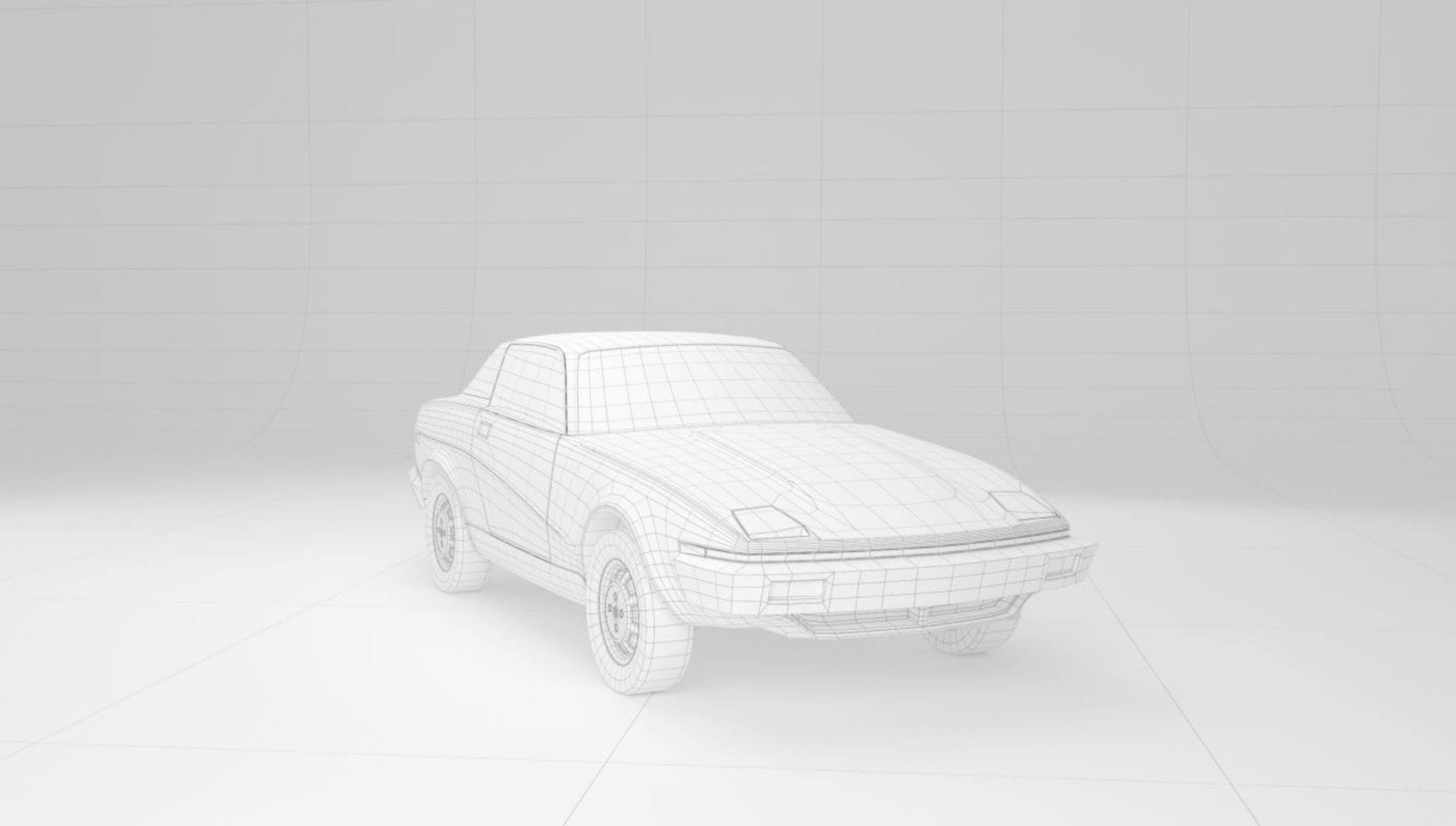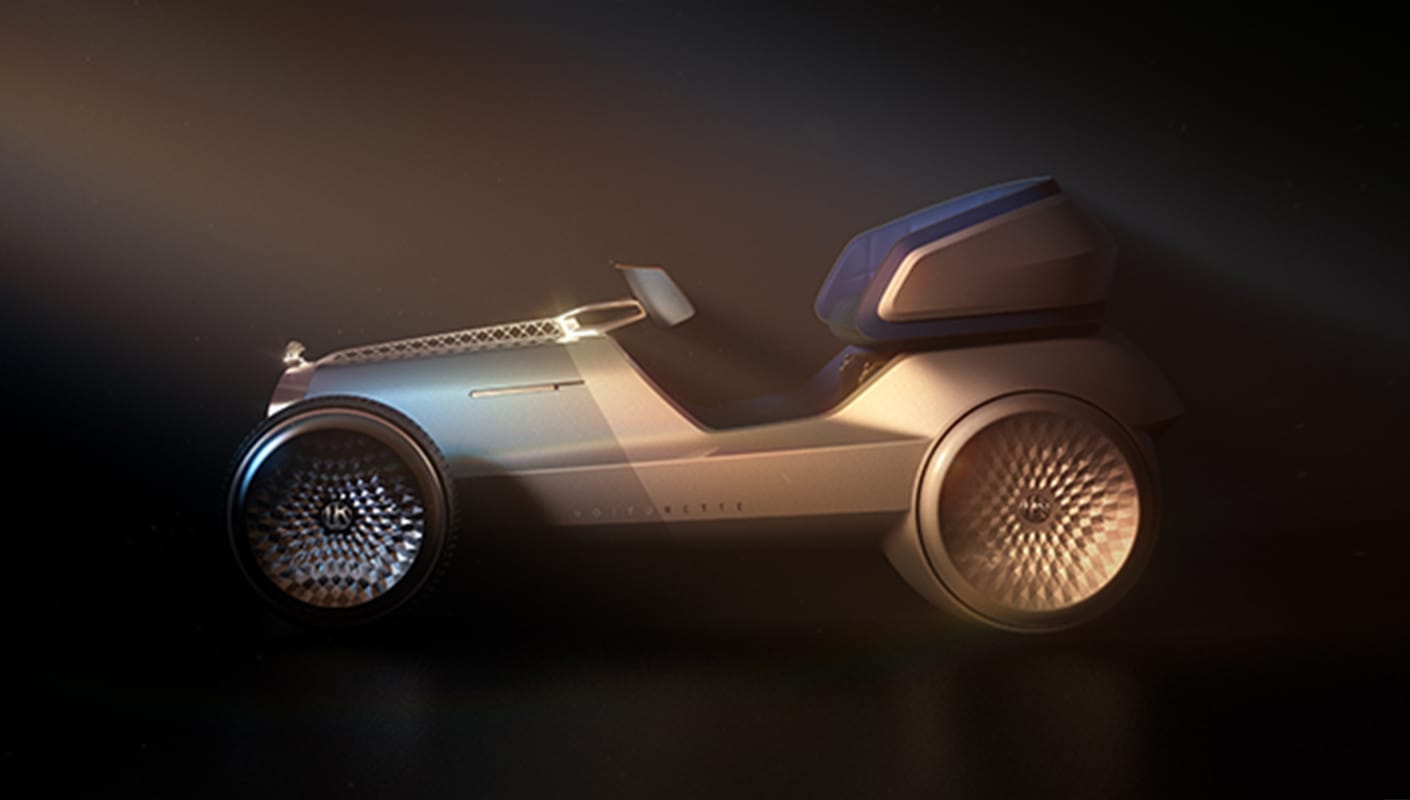What began as an in-house experiment has ballooned into a viral phenomenon. We talk to the minds behind this playful reimagining of the cars that style forgot.
London-based creative studio INK knows cars. Its portfolio includes shiny Jaguars, futuristic Aston Martin “hypercars”, and forward-thinking Honda concepts. In its downtime, INK indulges its creativity and expertise with beautiful passion projects: Plain Bodies strips legendary race cars of their livery to highlight their designs in pure white, while Dream Cars juxtaposes lovable Fiat 500s and Citroen 2CVs against a utilitarian testing facility.
Now, INK has turned its attention to the angular automobile abominations which blighted UK high streets in the 1970s: Austin’s Allegro and Princess, and Triumph’s TR7. In typical INK fashion, though, there’s a twist: the company has blown up the cars. Think more helium balloons than Michael Bay, though.
We invited INK’s Creative Director David Macey, and 3D Artists Ioanna Ivanova, Levente Szatmari, and Hermunpreet Mehat to explain how the project came about, and the genius techniques they used to breathe life into old autos.
David also joined Chaos Group's Chris Nichols and Lon Grohs for a podcast on INK and its cool and crazy projects. We've embedded the podcast at the end of this blog post.
How did the project come about?
David
We had done some interesting experiments with buildings inflating. We did a detailed scene, which looked cool — but it didn’t have that simplicity of one thing, on its own, inflating. It became too complicated.
Our Animation Director Michael Haas did a bit of experimenting with cars crashing into one another, but rather than smashing up they inflate. Again, it seemed too complicated. So we thought, what happens when you just take one thing and inflate it? Something simple, nice and satisfying, but a bit odd.
I thought using the dodgy old British motors of the 1970s could be a good thing because they’re funny and quirky. So we played around, the team collaborated on ideas, and the idea evolved into Bloated Motors.
Could you tell us a little about the cars?
David
The Austin Allegro was nicknamed the “flying pig” for its bloated looks, poor build quality and reputation for unreliability. The Triumph TR7, also known as “the bullet,” was designed to represent the shape of the future. And the Princess’s design earned the nickname “the wedge” for its angled and slanting panels.

Tell us about how you modeled the cars.
Levente
The important thing was to make it from one piece and to make it as low-poly as possible, without losing too much detail. We tried to do as many details as we could using texture maps and bump or displacement.
David
It had to be one single object for it to work as cloth. It was a balance between adding detail in wrapping so it looked realistic enough, but making sure it still worked with the simulation. Things like the lamps and badges were just textures with a little bit of displacement, the balloon creases were displaced as well.

The Allegro's displacement map
How did you create the creases?
Levente
We inflated the car in 3ds Max, then modeled the balloon creases in 3D in ZBrush, and then they were transformed into textures, and the texture was brought back into 3ds Max and used as displacement maps. And then we rendered with V-Ray for 3ds Max.

And how did you achieve and control the inflation effect?
Ioanna
We applied a cloth modifier to the whole object in 3ds Max. The modifier has different parameters: Pressure was the most important as this inflated the car. Gravity was reversed, so when the simulation starts the car goes up instead of down.
We had high values on bend parameters and stretching so the object didn't bend while simulating, and to get a nice rubbery effect. To achieve the lightness of the foil, we set the density parameter to a really low value.
Even when simulations seem simple they can be tricky, and it definitely takes time to achieve the look you want. For example, we tried lots of different timings so we could get the cars to linger for a little while before they floated out of the shot.


David
The TR7 looks a bit like a hippo when it’s inflated. There’s a bit of character, the way the wheels spring out. The way the Allegro goes up, and it’s got these arms and legs hanging. The Princess feels really heavy, the way it comes out and the exhaust pipe just bends slightly. And it all fits with the form of the car.
It wasn’t the software that did that — it was Mike’s ability as a character animator to bring out the personality in each car. He was tweaking things, and the cars just kept looking cooler every time he inflated them.


How did you get that metallic foil look?
Hermunpreet
I created the materials as a mix between car paint and a balloon, with the reflectivity of the car paint and a plastic feel of a balloon. I used a V-Ray Material as a base, with only a colour and a tiny amount of bump to create a wobble in the paint.

Hermunpreet's materials setup
The next step was to create the reflection, I tested multiple materials with different amounts of glossiness and scratch bump values. But this looked visually too busy so I settled on just one coat material on the base layer with a falloff map.
It sounds simple, but there was a lot of back and forth, rendering and adjusting. As the whole car was a single object, we created the details in the materials. Examples of this include the bonnet vents or the fuel caps, where we used masks and non-reflective black materials to give the appearance of holes.

The TR7 bonnet bump map
What about the lighting?
Hermunpreet
We experimented with static lights in the beginning, but as the car was moving a lot it didn’t really work, so we moved the lights alongside with the car. I used V-Ray lights with either a gradient ramp texture or V-Ray softbox, depending on what worked best.

The lighting setup
How’s it been received?
David
It’s been featured on some of our favorite blogs, and I think people definitely buy into the fun aspect of it. It’s a really nice project with long-term prospects for inflating other cars and different things. At the same time, we don’t want to get bored of doing it — the purpose of it was to have some fun, and to make something people haven’t seen before.

The cars were well-known in the UK, but not so much in the rest of the world. How have they reacted to the project?
David
I was away in America last week on INK business. The day I was presenting, DesignBoom featured it, so everyone had seen the films already — but they didn’t know what the cars were. So they wanted to give ideas on which US cars to inflate. Unless you’re a 30-something Brit you might not get the cars — but people have an opinion on it.
What are you working on next?
David
Dream Machines is our next project. We haven’t started it yet, but we’ve got an idea — and it’s not cars.
Want to know more about INK? Listen to our podcast with David Macey.





